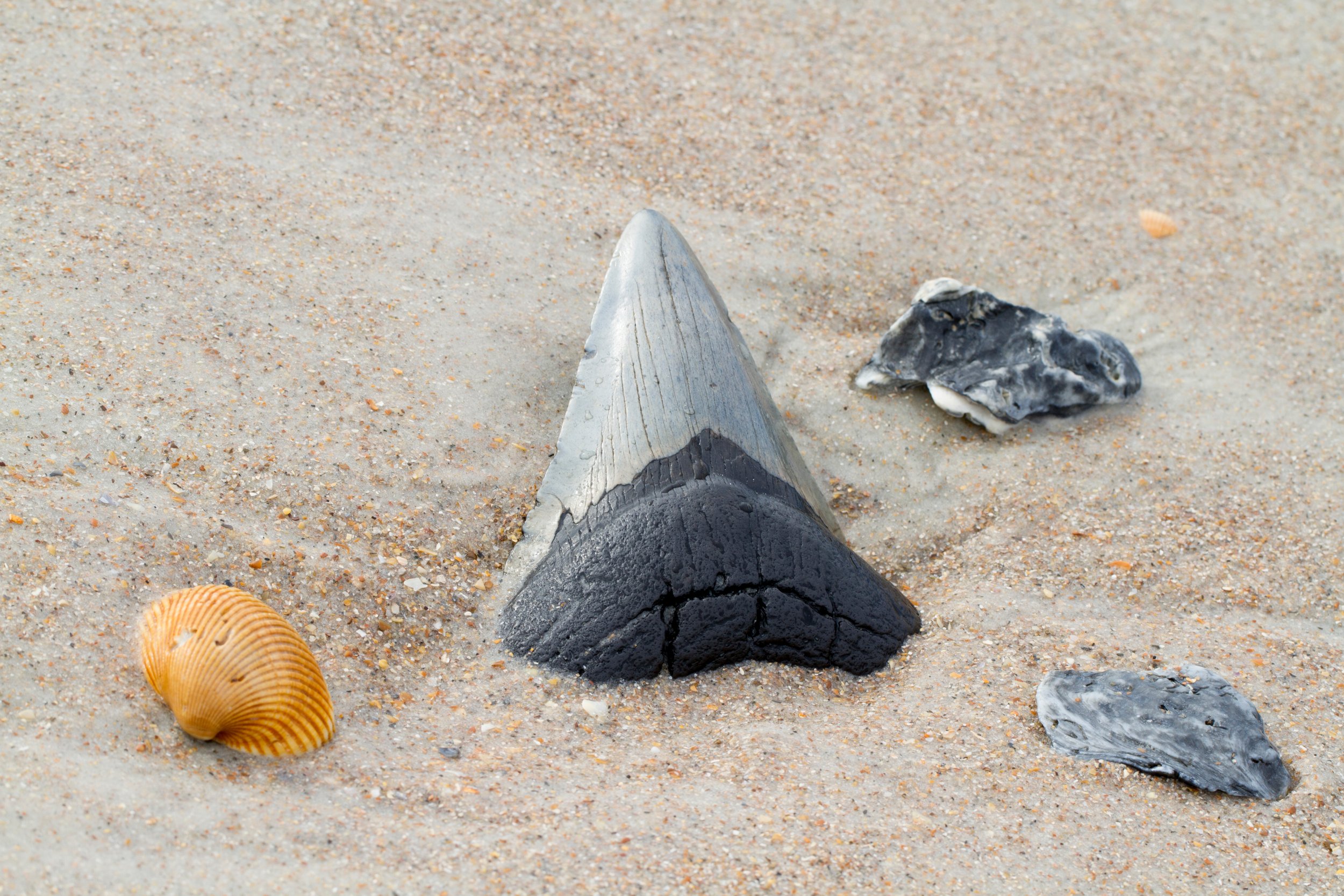In Pursuit of Jaws
Top 10 Destinations to Discover Megalodon Teeth
The Megalodon, the most massive and fearsome shark to have ever existed, roamed the world's oceans millions of years ago. While these colossal creatures are long extinct, their legacy remains etched in the form of fossilized teeth that avid collectors and paleontologists yearn to find. What’s pretty cool is they are fairly easy to find if you know the right places to look! So where should you look? Here are the top 10 destinations around the world where you can search for the biggest Megalodon teeth.
Cooper River, South Carolina, USA
South Carolina is a well-known hotspot for Megalodon teeth. Diving in the murky waters of the Cooper River can yield massive, well-preserved specimens. The river's strong currents often unveil previously hidden fossils.
Venice, Florida, USA
Often dubbed the "Shark Tooth Capital of the World," Venice Beach offers plentiful opportunities for beachcombers. After a storm, it's not uncommon to find Megalodon teeth among the seashells.
Potomac River, Maryland, USA
The cliffs along the Potomac River hold a myriad of prehistoric treasures, including Megalodon teeth. Fossil hunting is best done after periods of erosion when new treasures become exposed.
Baja Peninsula, Mexico
The desert landscape of Baja holds a contrasting secret: rich deposits of Megalodon teeth. Over the years, erosion in this region has revealed several impressive specimens.
Bone Valley, Florida, USA
This region's name gives away its fossil-rich reputation. Divers and diggers in Bone Valley have found Megalodon teeth exceeding seven inches in length.
Morocco's Phosphate Mines
The phosphate mines of Morocco, particularly around Khouribga, have revealed a treasure trove of fossils. Alongside whale bones and other ancient remnants, massive Megalodon teeth have been unearthed.
New Caledonia, South Pacific
This remote Pacific island is not just a tropical paradise but also a hunting ground for Megalodon teeth. The waters around New Caledonia have produced several notable finds.
Chesapeake Bay, Virginia, USA
The Calvert Cliffs along the Chesapeake Bay hold sediment layers that date back millions of years. These cliffs have given up numerous Megalodon teeth, often in pristine condition.
Hawke's Bay, New Zealand
The coastlines of New Zealand have long been known for their fossilized treasures. In Hawke's Bay, Megalodon teeth are among the prized finds for diligent searchers.
Antwerp, Belgium
The sand quarries around Antwerp have consistently produced Megalodon teeth, making it a popular destination for European fossil enthusiasts.
While the quest for Megalodon teeth is thrilling, it's essential to ensure that you're collecting responsibly. Always seek permission where needed, respect local regulations, and remember that these fossils provide a window into our planet's prehistoric past. They're more than just relics; they're stories waiting to be told. Happy hunting!
Tips and Tricks for Finding Giant Shark Teeth
Know Where to Look
Riverbeds and Ocean Floors: Many teeth are found in riverbeds or on the ocean floor, especially in places where sharks were believed to have frequented.
Cliff Bases: Over time, cliff erosion can expose fossils that have been embedded in the layers for millions of years.
Best Time to Search
After Storms: Storms often erode beaches and riverbanks, uncovering hidden treasures.
Low Tide: At beaches, the receding tide can reveal previously buried finds.
Essential Equipment
Sifting Screens: A screen helps separate the teeth from sand, mud, and other debris.
Shovels and Digging Tools: Useful for digging in potential hotspots.
GPS or Marking Tools: If you discover a rich spot, you'll want to return.
Recognize the Real Deal
Size and Shape: Megalodon teeth can range from small (a few inches) to gigantic (over seven inches). They typically have a triangular shape.
Edges: Megalodon teeth have serrated edges—like a steak knife. The serration can wear over time, but remnants are often still visible.
Color: The color of the tooth can vary based on the minerals in the soil where it was found. Black, gray, brown, and reddish hues are common.
Respect Local Regulations
Many areas have restrictions on collecting fossils. Always:
Seek Permission: Especially on private lands.
Follow Local Laws: Some places have strict rules about collecting, while others might allow hunting but with certain restrictions.





